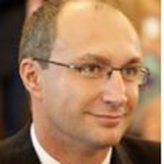How do you store the most dangerous materials on Earth? Changing international policies on nuclear waste
In collaboration with
The problem of how to safely store radioactive waste from nuclear power plants has been one of the most formidable environmental challenges of recent decades.
While nuclear power is a reliable low-carbon energy source – and therefore of high relevance in the current climate emergency – questions over its safety and its effective management remain, posing major challenges for government and industry.
Spent fuel from fission reactors remains highly radioactive – and dangerous – for hundreds of thousands of years. Stringent criteria apply to both the containers used to bury this waste and the metals used in fusion reactor cores (which have to be stable enough to withstand extreme conditions).
Queen Mary’s Professor Trachenko has made a crucial contribution to resolving these issues by enabling relevant materials and scenarios to be realistically modelled for the first time.
The limitations of standard software
Professor Trachenko’s molecular dynamics code is the first in the world to provide ‘on-the-fly’ modelling of the damage that radiation inflicts on a given material.
By moving from the standard ‘postmortem’ analysis to this ‘on-the-fly’ approach, Professor Trachenko’s work has overcome two computational bottlenecks in DL_POLY (the leading molecular dynamics simulation software used for such modelling). Until Professor Trachenko’s breakthrough, DL_POLY couldn’t efficiently simulate or analyse very large file sizes. It also lacked the necessary algorithms for dedicated radiation modelling.
In comparison, Professor Trachenko’s high-performance algorithms can model very large systems and high-energy collisions, creating for the first time realistic models of ‘real-world’ nuclear encapsulation materials.
This is of significant global importance, given the dangerous consequences of radioactive waste and unstable reactor cores.
Breakthroughs in radiation modelling
Professor Trachenko designed algorithms to run and analyse large systems ‘on the fly’ - an important approach for very large systems where the old method of writing and analysing large files is not feasible.
Other developed algorithms included a ‘variable timestep’ method. Timesteps are the incremental intervals over which the equations governing a system are solved for a scenario in which parameters change unevenly with time, such as radiation modelling.
At each simulation step of a system, the maximum distance travelled by a particle is used to define and reset the timestep, allowing the simulation to slow down enough to accurately model the dynamics at the most violent stages of a nuclear collision – and then speed up again to use CPU time most effectively when the system cools.
The new algorithms also provide more effective energy dissipation and faster temperature relaxation, via a ‘thermostat bath’, which in turn accelerates modelling and allows the simulation of higher-energy impacts.
Professor Trachenko has also adapted other recent pioneering radiation modelling ideas, such as Duffy and Rutherford’s electronic energy loss algorithms. In collaboration with DL_POLY’s developers, he incorporated them into DL_POLY, creating an innovative radiation modelling tool.
Evaluating resistance to radiation damage and material stability
Professor Trachenko designed a tool to detect defects 'on the fly'. The tool compares the data in a given simulation to the reference data for the same material in its undamaged state, so that the number of defects can be efficiently calculated – and therefore the amount of radiation damage that a material has suffered.
Professor Trachenko’s code enables researchers to efficiently determine the defects in a material and model the radiation damage that material can handle before becoming unstable. This is essential for identifying materials that are suitable and able to safely store radioactive nuclear waste. It also saves valuable time in interpreting simulation results.
Prize-winning achievement
For his work in condensed matter physics including DL_POLY development, Professor Trachenko was awarded the 2020 EPSRC-funded Collaborative Computational Project (CCP5) Prize and Lecture. The Prize is given biennially to an outstanding UK or overseas scientist in the field of classical molecular simulation. His work in condensed matter research has been awarded the top 10 Physics Breakthrough Prize
Changing international radioactive waste storage
Professor Trachenko’s code has influenced international policy on nuclear materials and waste storage at the US Oak Ridge National Laboratory, the UK National Nuclear Laboratory and the UK Nuclear Decommissioning Authority.

Dumping of radioactive waste barrels
‘Far superior’
The US Oak Ridge National Laboratory (ORNL, the largest of the US Department of Energy’s science and energy laboratories) used Professor Trachenko’s algorithms to run detailed radiation damage simulations. According to Professor William Weber, Governor's Chair Professor, University of Tennessee Knoxville, the radiation damage modelling features implemented in DL_POLY as a direct result of Professor Trachenko’s contributions ‘are unique to the package and include the ability to model high-energy collisions, accurately detect defects and model large numbers of atoms in a way that would simply not be possible using other available software or earlier versions of DL_POLY’.
DL_POLY is now the laboratory’s ‘preferred software for modelling complex ceramic materials’ with ‘the implementation of the two-temperature model approach in DL_POLY being far superior to that in previously used software.’
International collaboration
The United Nations International Atomic Energy Agency (IAEA) has also been influenced by Professor Trachenko’s research. In 2016, the IAEA held a joint workshop with the International Centre for Theoretical Physics (ICTP) on ‘Radiation Effects in Nuclear Waste Forms and their Consequences for Storage and Disposal’. The IAEA invited Professor Trachenko as ‘an internationally recognised expert in developing and applying the molecular dynamics code DL_POLY to such problems’.
As a result of the meeting, the IAEA created a new Coordinated Research Project (CRP) designed to ‘address themes of current interest in radiation and nuclear sciences’ and to ‘bring together experts from around the world, both from developed and developing countries.’ Professor Trachenko was brought in due to his ‘expertise as the key developer of the radiation modelling aspects and approaches’ and to his ‘long-lasting experience in usage of ... state-of-the-art software.’ The results from Professor Trachenko’s simualtions have been used to inform of the best practice for the safe disposal of nuclear waste for the IAEA’s 193 member states.
The IAEA has also praised the freely available nature of Professor Trachenko’s software as this ensures results ‘can be easily shared with many other groups around the world.’
Safer stockpiles
The UK National Nuclear Laboratory (NNL), which advises the Nuclear Decommissioning Authority (NDA), has a particular interest in the use of ceramics as casing materials for radioactive waste. The NDA has jointly funded PhD studentships using DL_POLY to explore how the decay of encased radioactive material (eg plutonium) damages ceramics.
Preserving the UK’s nuclear deterrent
The UK Atomic Weapons Establishment has used Professor Trachenko’s code to assess and safeguard the UK’s nuclear deterrent, improve its storage of nuclear materials, and to streamline working processes.
According to a UK Science and Technology Facilities Council case study (published in 2020 by the Ministry of Defence), the new radiation modelling features in DL_POLY are ‘invaluable to the AWE, which carries out a range of … research into the ageing of radioactive materials such as metals and oxides.’ Professor Mark Storr of AWE comments that ‘Understanding the ageing process is vital to designing the optimum storage conditions and environment [for radioactive materials]. This is where the DL_POLY software plays a key role.’ Furthermore, use of DL_POLY ‘reduces the number of experiments needed, thereby cutting costs and speeding up research.’
In this way, Professor Trachenko’s research enables the international community to safely store some of the world’s deadliest materials, for generations to come.
Schools, institutes and research centres
School of Physical and Chemical Sciences
Rich in history, the School of Physical and Chemical Sciences has a distinctive collegiate structure. In 2021, Queen Mary's Department of Chemistry merged with the School of Physics and Astronomy to form the School of Physical and Chemical Sciences.
Condensed Matter & Materials Physics
The challenge of understanding materials requires a multi-faceted approach, and in particular involving a wide mixture of experimental methods and computer simulation techniques. We classify our work under five headings: Functional materials, Local structure, Materials for nuclear energy, nanoscale materials, and organic semiconductors.
Materials Research Institute
The creation of the Materials Research Institute (MRI) brings together a range of expertise from within several Schools: Engineering and Materials, Physics and Astronomy, Biological and Chemical Sciences, and Dentistry to create a coherent interdisciplinary activity focused on five key research themes.

